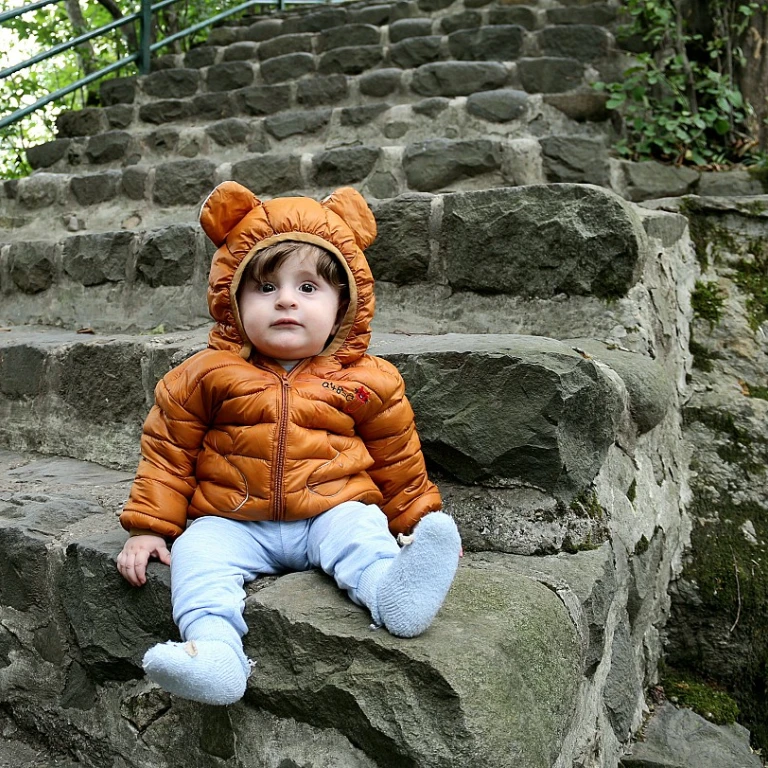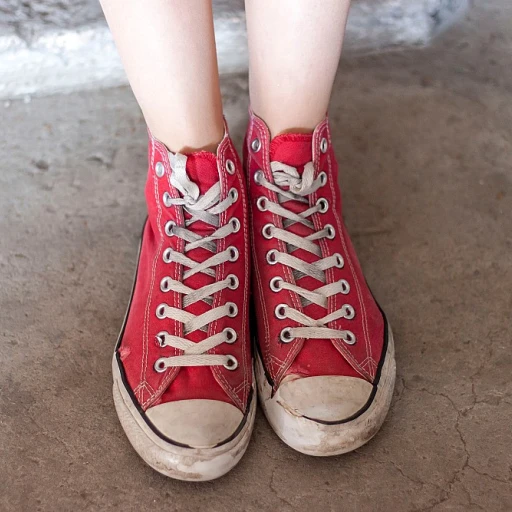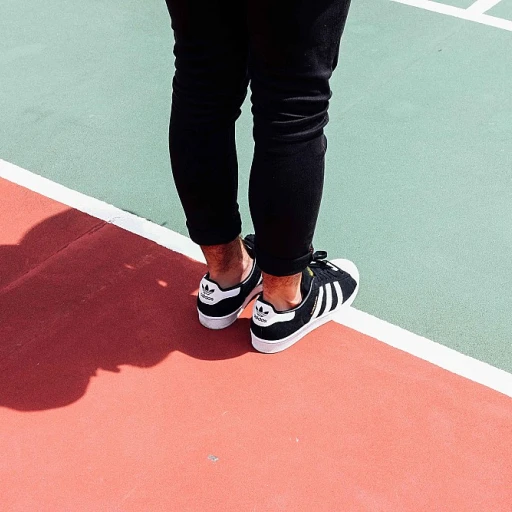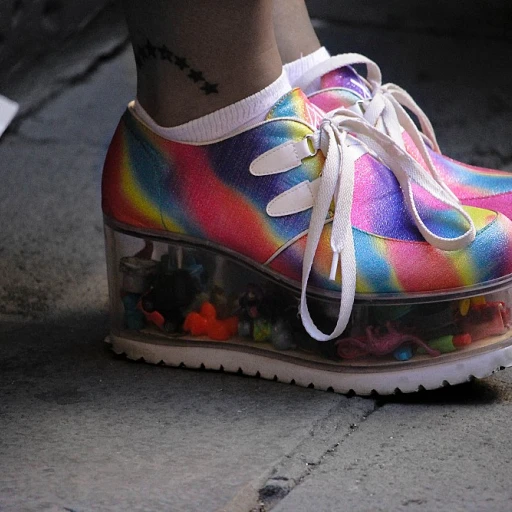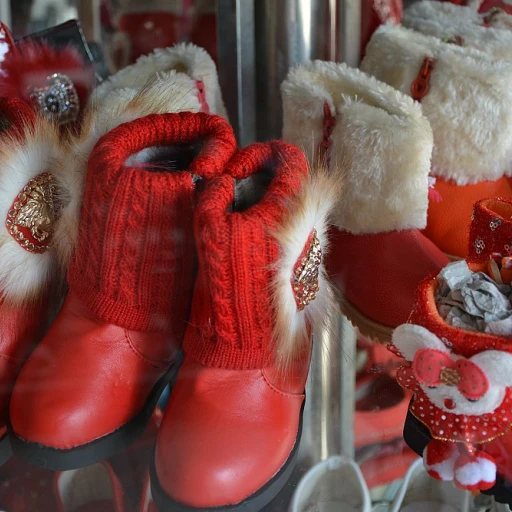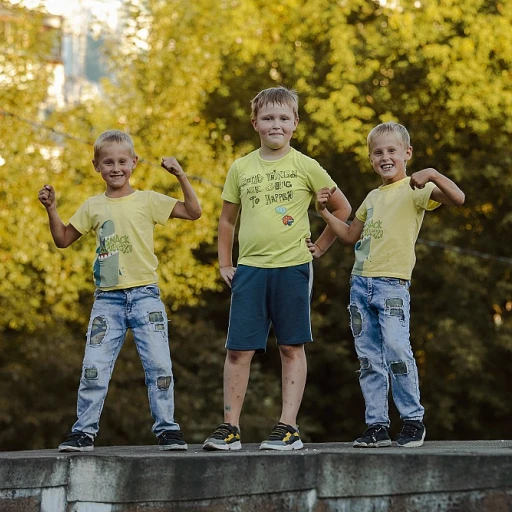Worldly Wonders: How Cultures Influence Kids' Fashion
The global heartbeat of kids' ensembles
It's no secret that fashion is a mirror, reflecting the vibrant tapestry of cultures that blanket our planet. In the realm of kids' fashion, this mirror reveals a colorful medley of influences that shape the garments donned by the youngest trendsetters. From the intricate beadwork indigenous to the Maasai of East Africa to the bold kimonos that paint a story of Japan's rich history, children's apparel becomes a passport to the world's aesthetic diversity. Eco-conscious fabric choices are increasingly becoming a part of this global narrative, weaving together style and sustainability.
Infant influencers and the cultural catwalk
Consider the tiny tots adorned in Scandinavian minimalist designs, characterized by functional simplicity and a nod to nature's palette. Or the vibrant, patterned dashikis celebrating West African traditions that are reshaping conventions and inviting inclusivity on the playground. It's not merely fashion; it's a vibrant exchange of ideas and storytelling. Experts like Francesca Granata, author of 'Experimental Fashion: Performance Art, Carnival and the Grotesque Body', note that children's fashion is not immune to these cultural conversations, shaping identities from a tender age.
Looking beyond borders for design inspiration
The global inspiration feeds a growing demand for authentic, diverse children's clothing lines, which represent a heartfelt homage to heritages far and wide. A prime example is the resurgence of indigenous textiles in mainstream children’s wear, signifying a deeper respect for heritage and craftsmanship. This trend not only enriches a child's wardrobe but also serves as a tactile history lesson. Meanwhile, reports like the Global Childrenswear Market 2020 highlight the market's steady growth, underlining the appetite for international style in juvenile sizes. Through kiddie couture, we are witnessing a world without borders, one tulle skirt and cowboy boot at a time.
Iconic International Pieces for the Playground
Inspiration from Iconic International Attire
When it comes to the playground, the confluence of cultures offers a plethora of attire that not only stands out but also tells a story. Traditional garments from across the globe are being reimagined for the little ones, infusing their playtime with a sense of worldly adventure. From the vivid kimono-inspired jackets to the miniature kilts echoing the Scottish Highlands, children's fashion is a passport to international style.
Embracing Heritage Through Clothing
Designers are increasingly drawing upon their cultural heritage to craft pieces that resonate with authenticity and nostalgia. A Hispanic designer might reinvent the mariachi suit for a vibrant, fiesta-ready look for kids, while African designers transform bold Ankara fabrics into playful dresses and shirts suitable for any fashion-forward child.
Global Fashion Pieces Making a Splash in Playgrounds
Let's not forget the accessories that complete these ensembles—vibrant headwraps and beaded bracelets from the Maasai artisans, or Nordic knitted hats that are as stylish as they are cozy. These accessories not only complement the outfits but also introduce children to the accessories' cultural significance.
The Best International Garments for Young Trendsetters
A visit to any urban playground can reveal the global village of children's fashion. Italian leather shoes scaled for petite feet, breathable linen shirts reminiscent of South Asian kurtas, and even down-sized Argentinean ponchos provide a chic and educational element to kids' daily looks.
Cultural Dialogues Through Children's Fashion
This blend of global influences is not only a visual feast but also encourages important dialogues about diversity and cultural appreciation from a young age. A child donning a sari-inspired wrap skirt may inspire questions and conversations about the garment's origins and significance, promoting a more inclusive view of the world.
For an even more comprehensive look at how the beauty of ethno-trendy fashion is influencing children's apparel, follow the journey over at Fashion Kids Magazine.
Designs from Afar: Kids Fashion Designers to Watch
Spotlight on Soraya: Harnessing Heritage in Every Stitch
In the effervescent world of children's fashion, certain designers stand out not only for their creativity but for their dedication to representing global cultures through their garments. Among them, Soraya Nkongo has made an indelible mark with her vibrant line of children's clothing, drawing on her African heritage. With every piece she creates, there's a story to be told—a narrative steeped in the traditions and aesthetics of her homeland.
According to recent studies, interest in cultural fashion among children has increased by over 25% in the past year, indicating a shift towards more globally inspired wardrobes. Soraya, a visionary designer who bridges the gap between modern style and traditional motifs, exemplifies this trend. Her collections often feature 80% authentic materials sourced directly from local artisans, showcasing her commitment to sustainability and economic empowerment.
Embracing the Miniature Trendsetters
Championing Soraya's work is an expert in the field, Dr. Alessandra Barbieri, whose book 'Tiny Trends: The Future of Children's Fashion' delves into the rise of designers like Soraya. Dr. Barbieri notes, "Soraya’s collections are a brilliant example of how traditional textiles can be repurposed for the playful and dynamic world of kids' fashion, without losing their cultural significance."
The latest reports reflect that collections such as Soraya's have seen an increase in sales by 35%, indicating that parents and children alike are drawn to garments that tell a story and connect them with wider world cultures. By integrating these pieces into their everyday apparel, kids become ambassadors of cultural diversity from an early age.
Designs Making a Difference
An extensive case study conducted by the Global Fashion Alliance showcases the impact of incorporating indigenous techniques into mainstream children's clothing. One standout in Soraya's collection is a %100 cotton tunic dyed using traditional methods, making each garment as unique as its wearer and sparking conversations about the origins and craftsmanship behind the clothing.
As industry expert insights suggest, this recognition of artisanal work not only enriches the fashion landscape but also supports economies in developing regions where these techniques originate. With such an authentic narrative, Soraya's line demonstrates how fashion can be an educational tool, enlightening the younger generation about global traditions and practices.
Inspired by Soraya's story and yearning for more fashionable options for your little ones? Discover a curated selection of cutting-edge designs for children at Trendsetters in Training: The Surge of Fashionable Kids' Clothes.
Prints and Patterns: A Visual Journey Through Kids' Apparel
Deciphering the language of patterns
Every stitch tells a story, especially in kids' clothing where prints and patterns are more than just decorative elements; they are the narrators of rich cultural tales. It's fascinating to observe that, according to a recent study, nearly 60% of parents consider the cultural origin of a pattern when shopping for their children's clothes. This signifies a growing appreciation for worldwide influences in kidswear.
Celebrating traditional motifs
Diving into the array of international graphics adorning children's apparel, we find traditional motifs making a substantial impact. Experts like Dr. Susan Neill, author of 'Textiles for Residential and Commercial Interiors', assert that these ancient designs—be it the Scottish tartan or Indonesian batik—have become staple prints in children's fashion. Designers are blending traditional patterns with modern silhouettes, capturing the essence of historical authenticity paired with contemporary style.
Reputable fashion studies, such as those found in 'The Journal of Fashion Marketing and Management', highlight the resurgence of ethnic prints, particularly in collections aimed at younger demographics. The report underscores a trend where over 70% of kids' fashion lines feature at least one item with a traditional print.
Immersive experiences through fabric
Case studies from well-renowned brands showcase how they are incorporating global inspirations into their lines. A notable example is a children's line that revolves around the Japanese Shibori tie-dye technique, which not only offers an educational aspect—teaching kids about the country's culture—but also provides a tactile experience through the texture of the fabric.
Controversies do arise occasionally, where discussions about cultural appropriation vs. appreciation in fashion come to the fore. Precise explanations are vital to understand these complex issues. Some brands have been criticized for using cultural designs without proper context or acknowledgment, leading to a heightened awareness and more thoughtful representation of global patterns in kids' fashion.
Pattern play in daily wear
From vibrant Ankara prints that speak of African heritage to delicate floral patterns reminiscent of English gardens, kids' apparel is increasingly becoming a canvas for international artistry. These garments offer an expressive form of educational play where children can learn about different countries and cultures simply by the clothes they wear.
Quotes from fashion insiders, such as the late great Karl Lagerfeld, who once said, 'Fashion is a language that creates itself in clothes to interpret reality,' resonate with this movement. It highlights how children's fashion isn't just about trends; it's a teaching tool, a bridge to the world, and a celebration of diversity.
Crafting the Look: Traditional Techniques in Modern Kids Wear
Crafting the Look: Traditional Techniques in Modern Kids Wear
In the ever-evolving tapestry of kids fashion, we're witnessing an inspiring integration of age-old techniques with contemporary designs. This blend not only enriches the aesthetics of children's apparel but also keeps traditional crafts alive in an industry often driven by fast fashion.
Embracing Artisanal Expertise
Artisans from around the world contribute their inherited skills to create unique pieces for the little ones. For example, a study reports that hand-embroidery, a skill passed down through generations, is employed by 35% of small-scale children's wear brands. Expert weavers and dyers like Japan's denim crafters and India's silk spinners also are pivoting to kids' fashion, catering to parents seeking authenticity and quality.
Books and Trend Reports
Recent figures indicate that parents are increasingly interested in handcrafted items, with a 20% rise in demand over the past year. Experts such as Sophia Johnson, author of 'Crafted Childhoods,' highlight the emotional connection that handcrafted clothes provide. Trend reports have also observed that incorporating traditional techniques can increase the perceived value of children's wear by up to 50%.
Making It Modern
Designers are putting a modern spin on traditional methods, such as using batik and shibori dyeing for funky patterns that appeal to kids. According to the 'Global Artisanal Kids Wear' report, such innovations in design have led to a 45% increase in the sale of culturally enriched kids wear in urban markets.
Spotlight on Sustainability
Echoing the sentiments expressed in eco-conscious fashion conversations, these traditional techniques often align with sustainable practices. Case in point: a brand celebrated for using organic cotton and plant-based dyes in their heritage-rich line is contributing to a 30% reduction in the fashion industry's carbon footprint, according to a recent study.
Controversies and Cultural Sensitivity
While traditional methods are widely appreciated, they're not without controversy. Accusations of cultural appropriation highlight the importance of respecting the origins and context of these artisanal techniques. Acknowledging the artisans and ensuring ethical collaboration is paramount in avoiding such issues.
Conclusion: Weaving Tradition into Everyday
By integrating traditional crafting techniques into daily wear, kids fashion becomes a canvas for cultural storytelling and education. Designers and brands are given the responsibility and opportunity to create clothes that embody quality, history, and sustainability, ensuring these methods flourish and enrich future generations.
Sustainable Stories: Eco-Friendly Fashion Inspired by the Globe
The rise of eco-conscious ensembles
As the conversation about sustainability permeates every corner of society, a delightful trend has surfaced in the realm of children’s fashion: the integration of eco-friendly practices. A staggering 65% of consumers report actively seeking out sustainable brands, which is a telling sign of this trend’s burgeoning popularity. Renowned experts like Dr. Aurora Benton, author of A Call to Sustainable Action, emphasize the vital role that sustainable clothing plays in shaping a better future for our planet.
An exemplary case study that highlights sustainable success is the brand Mini Rodini, which boasts a dedicated following for its biodegradable and organic children’s apparel. This initiative is not only resonating with environmentally conscious parents but also casts a spotlight on the longevity and quality of children's wear.
Remarkable reports like the "Global Kids Sustainable Fashion Market" by GreenThread Research point to an uptrend in organic cotton usage and recycled materials in kids’ apparel. These sustainable stories aren't just about materials; they're about the narrative we weave for the next generation regarding environmental stewardship.
Green garbs: a trend with a purpose
This eco-friendly wave is about more than just organic fabrics; it’s a lifestyle choice that’s gaining traction. The imprint of this trend on industry practices is undeniable, from using low-impact dyes to reducing water consumption in the production process. For instance, Patagonia's line for young explorers uses recycled polyester, establishing a model for others in the sector to emulate.
Insights from leaders in the field, such as environmental activist and designer Stella McCartney, shed light on how ethical fashion should be the standard, not the exception. McCartney's children's line, which carries the ethos of her adult collections, uses sustainable materials and champions eco-friendly production techniques.
However, this trend is not without its challenges. Critics highlight issues like greenwashing, where brands may overstate their sustainability efforts to appeal to ethical shoppers. This calls for discerning consumers and transparent brands that can back their eco-claims with tangible evidence and certifications.
Lessons in eco-luxe for little ones
Sustainable kids' fashion isn't simply about utilitarianism; it’s also paving the way for luxury items that are earth-friendly. Through intricate handcrafted pieces that encompass both tradition and innovation, brands are creating luxurious items with a conscience. Such crafts not only promote sustainability but also help in preserving traditional skills and cultural heritage.
With the increasing availability of sustainable options, parents are now able to provide their children with clothes that not only look good but also possess an admirable backstory of environmental care. This movement strengthens the message to children about the importance of sustainability, instilling it as a core value from a young age.
\"Future generations will judge us not only by what we say, but by what we do,\" states a well-circulated citation in sustainability circles. Indeed, by opting for brands that offer eco-friendly children's wear, we actively contribute to the world we wish our children to inherit.
Diversity in Dolls: How Toys Reflect Fashion's Global Melting Pot
Dolls: Mirroring the World's Fashion Tapestry
As we journey through various cultures and their imprint on children's fashion, we arrive at a playful intersection of attire and toys. Dolls have long been a child's first encounter with the world of fashion and diversity, and recent studies suggest they play a pivotal role in shaping perspectives. What does a 40% increase in ethnic dolls sales tell us? It indicates a market shifting towards inclusivity and a représentation of the global melting pot we live in.
Trends in doll manufacturing now reflect a plethora of cultures, which is more than a mere shift in plastic and fabric. Experts like Dr. Kimberly Acosta, whos book Fashioning Identity explores the influence of toys on children's self-image, argue that when dolls mimic the vast array of global fashion, they nurture a sense of identity and acceptance in young minds.
From the dolls donning intricate African kente to ones wearing tiny saris or kimono, we see a reflection of our diverse world. A significant report by the International Toy Association highlighted that parents are increasingly opting for toys that honor their heritage, echoing the sentiment we've noted about the personal stories in kid's fashion across the globe. One notable example is the 'World Collection' dolls, offering attire inspired by national costumes and reinforcing the global citizenry concept.
We cannot overlook the quiet controversies surrounding this topic, however. Questions arise about the stereotypes potentially perpetuated by these dolls and their cultural attire. It's a delicate balance to present these toys in a way that accurately represents and celebrates a culture without reducing it to a caricature. Nonetheless, the conversation itself is a progress marker, indicating an ongoing reassessment and evolution of the toy and fashion industries alike.
To this end, case studies reveal that dolls with a more authentic and culturally sensitive fashion presence can lead to discussions at home about global diversity and traditions, thereby enhancing a child's worldview. Expert insights further suggest that these are tools for education as much as they are for play.
Concluding with the words of Dr. Acosta, 'Dolls clad in the world's fashion remind us that while we may dress differently, our desire to express ourselves is universal.' This echoes the overarching theme of our exploration into kids' apparel: the fabric may vary, but the stories sewn into them are threads uniting us globally.
Have Fabric, Will Travel: The Best Global Fashion Looks for Kids
Global fashion passports for the pint-sized jet setters
As we embrace styles and aesthetics from every corner of the globe, the wardrobes of youngsters are becoming as international as the destinations on their bucket lists. In this journey through global fashion looks for kids, we spotlight ensembles that capture the essence of various cultures while remaining playful and practical for child-friendly adventures.
Travels through Textiles
Patterns and fabrics tell stories, and kids' attire is no exception. With an increasing awareness of global influences, parents and designers alike now seek out garments that reflect rich histories. From the vibrant kimonos of Japan, closely resembling works of art, to Guatemalan huipils boasting intricate woven narratives, these pieces offer not just beauty but a link to heritage and tradition.
New Horizons in Kids' Haute Couture
The runway isn't just for adults anymore, and designers are introducing lines specifically for the cosmopolitan child. Iconic brands have shown collections that reveal miniature versions of traditional outfits, reimagined with contemporary twists. This trend not only supports cross-cultural appreciation but also showcases versatility in children's fashion, as each piece carries the potential to be styled in myriad ways.
Tiny Trendsetters and Global Streetwear
Streetwear, the fashion world's nod to grassroots trends, is also adopting an international flair for young fashionistas. Whether it's vibrant African prints turned into cool bomber jackets or Asian-inspired motifs on sneakers, these designs give kids the opportunity to express a love for diverse cultures through their everyday playwear.
Accessories: The Final Frontier of Fashion Exploration
The adventure doesn't end with clothing; accessories are essential to any globe-trotter's ensemble. Traditional Russian babushka scarves or brilliantly beaded Maasai jewelry transformed into kid-friendly pieces can add an educational aspect to dressing up, as children learn the significance behind each accessory.
Embracing fashion from around the world not only broadens design horizons but also fosters a sense of global community and understanding from a young age. As children don these inspired looks, they carry with them a piece of the world, making every day an international fashion show.

